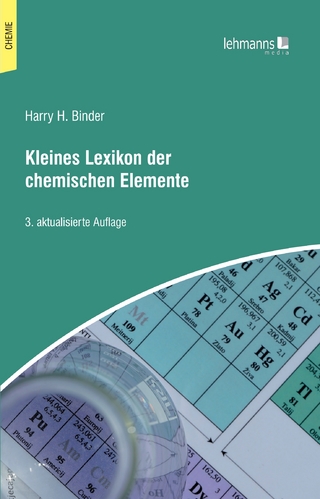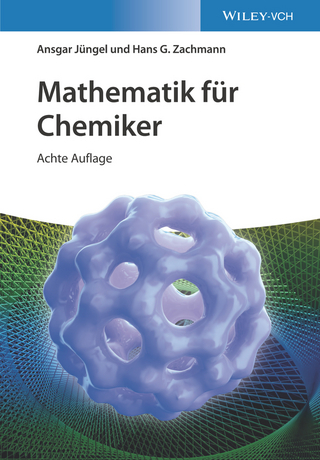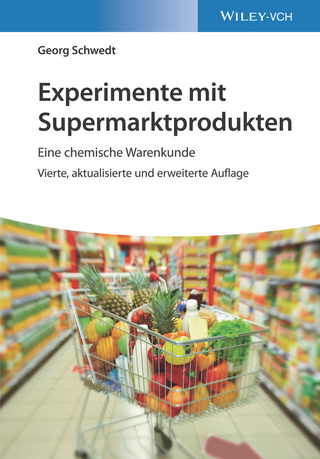
At Astatine
Seiten
2013
|
8. Softcover reprint of the original 8th ed. 1985
Springer Berlin (Verlag)
978-3-662-05870-1 (ISBN)
Springer Berlin (Verlag)
978-3-662-05870-1 (ISBN)
With contributions by numerous experts
Astatine is - besides radon and francium - the only natural radioelement which only has short-Lived isotopes, thereby excluding experiments with . . weighable" amounts of the element. This implies that all available data on physics and chemistry of this element are 12 16 based on experiments on the tracer scale with 10- to 10- g - and this will also not change in future because no longer-Lived isotopes as yet known are to be expected. Due to the fact that the only isotope of At occurring in the natural decay series, 219At, results from the 0. 005% a-branching of 223Fr which itself is produced by the only 1. 38% a-branching of 227 Ac - a member of the 235U series - there is no chance to recover substantial amounts of 219At from natural sources for sCientific research of At. All studies, therefore, are being done with the isotopes 209At to 211At having half-lives in the few hours region and being obtained by irradiation of bismuth with a-particles via (a,xn) reactions or by proton irradiation of heavy elements via spallation reactions. The mostly used isotope is 7. 22 h 211At. The fast separation of the obtained At isotopes is no very difficult procedure and is either being done by wet adsorption-precipitation techniques or making use of its high volatility by destilling in air.
Astatine is - besides radon and francium - the only natural radioelement which only has short-Lived isotopes, thereby excluding experiments with . . weighable" amounts of the element. This implies that all available data on physics and chemistry of this element are 12 16 based on experiments on the tracer scale with 10- to 10- g - and this will also not change in future because no longer-Lived isotopes as yet known are to be expected. Due to the fact that the only isotope of At occurring in the natural decay series, 219At, results from the 0. 005% a-branching of 223Fr which itself is produced by the only 1. 38% a-branching of 227 Ac - a member of the 235U series - there is no chance to recover substantial amounts of 219At from natural sources for sCientific research of At. All studies, therefore, are being done with the isotopes 209At to 211At having half-lives in the few hours region and being obtained by irradiation of bismuth with a-particles via (a,xn) reactions or by proton irradiation of heavy elements via spallation reactions. The mostly used isotope is 7. 22 h 211At. The fast separation of the obtained At isotopes is no very difficult procedure and is either being done by wet adsorption-precipitation techniques or making use of its high volatility by destilling in air.
1 History.- 2 Natural Occurrence.- 3 Nuclear Properties of Astatine Isotopes.- 4 Production, Isolation, and Purification of Astatine Isotopes.- 5 General Properties of Astatine.- 6 Analytical Chemistry of Astatine.- 7 Handling of Astatine.- 8 Astatine in Biology and Nuclear Medicine.- 9 Irradiation and Self-Irradiation of Astatine Compounds.- 10 Chemical Behavior and Compounds of Astatine.- Table of Conversion Factors.
| Erscheint lt. Verlag | 16.1.2013 |
|---|---|
| Reihe/Serie | Gmelin Handbook of Inorganic and Organometallic Chemistry - 8th edition |
| Zusatzinfo | XIII, 292 p. |
| Verlagsort | Berlin |
| Sprache | englisch |
| Maße | 170 x 244 mm |
| Gewicht | 540 g |
| Themenwelt | Naturwissenschaften ► Chemie ► Allgemeines / Lexika |
| Naturwissenschaften ► Chemie ► Anorganische Chemie | |
| Schlagworte | Adsorption • Bismuth • Chemistry • Francium • Isotop • Reactions |
| ISBN-10 | 3-662-05870-7 / 3662058707 |
| ISBN-13 | 978-3-662-05870-1 / 9783662058701 |
| Zustand | Neuware |
| Haben Sie eine Frage zum Produkt? |
Mehr entdecken
aus dem Bereich
aus dem Bereich
Eine chemische Warenkunde
Buch | Softcover (2022)
Wiley-VCH (Verlag)
29,90 €


